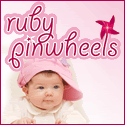One great way to find preschool curriculums is to put in google a search for "pre-k curriculum framework". This is a great resource for moms who aren't sure what they should be working on with their children. Here is an example of what to be working on for Pre-K language:
Oral language Development
1. Answer questions posed by an adult
2. Ask questions of an adult or a child
3. Participate in conversational turn-taking with adults
4. Participate in conversational turn-taking with other children
5. Use words from storybooks in oral language
6. Retell a story read aloud
Sample Activities
1. The parent models the difference between a question and a statement, inviting the children to participate. For example, the teacher says, “When do we eat lunch? That’s a question. Who has an answer?” (Children are likely to produce one-word responses, like soon or now.) The teacher extends the children’s responses to model simple statement formation. For example, if the children respond “now” the teacher can extend their response to “Yes. We eat lunch now. That is an answer to my question.”
2. The parent poses questions about the children’s daily life experiences. For example, the parent asks, “Where do you sleep?” or “What do you eat for breakfast?” or “Do you have a pet?” In addition to supporting the children’s responses through extensions, parents will be able to develop word meanings.
3. During and after storybook reading, the teacher poses specific questions related to the illustrations. For example, the teacher might say,
Where is the _____?
Which one is _____?
If children produce nonverbal or one-word responses, the parent extends them to complete sentences.
1. The parent chooses stories read aloud on tape or CD and listens to the stories with the children while displaying the illustrations. The parent guides response to the story after reading. The same story should be used several times during the week.
2. The parent chooses brief stories with clear illustrations, and reads them aloud repeatedly throughout the week, first in uninterrupted format, next with discussion after reading, next with discussion before and after reading, and finally with discussion before, during, and after reading.
3. The parent chooses brief stories with clear illustrations, reads them aloud repeatedly, and introduces the children to the concepts of beginning, middle, and end. The parent first models a retelling using those terms, and then, after a subsequent reading, invites children to participate in a retelling organized in this fashion.
4. During and after storybook reading, the parent poses specific questions related to the content of the story. For example, the parent might say,
What happened after ______?
Why did ______?
Who was _____?
If children produce nonverbal or one-word responses, the parent extends them to complete sentences.
Storybook Reading
1. Attend to storybooks read aloud
2. Recognize and use conventional book handling skills
3. Understand the concept of author and illustrator
4. Draw and label in response to reading
5. Understand that print is organized from left to right and top to bottom
6. Isolate an individual word in a text read aloud
Phonological Awareness
1. Identify rhyming words
2. Produce rhyming words
3. Clap words in sentences
4. Clap syllables in words
5. Isolate initial consonant sounds in words
6. Isolate onsets and rimes in words
1. The parent says two words and asks children to produce a response (e.g., clap, stand up, touch their noses) if the words are the same. For example, the parent might present these word pairs: horse-cow; horse-horse; horse-pig; pig-horse; horse-horse.
2. The parent tells the children that some words are not the same, but they sound the same at the end. These words rhyme. The parent shows children pictures in sets of three, with two words that rhyme and one that does not. The children choose the pictures that rhyme. For example, the parent might present these sets of pictures: dog-frog-cat; house-mouse-pig; chair-bear-shoe.
3. The parent reads aloud repeatedly a brief rhyming book or poem and then invites children to repeat the text. After the children can repeat the text, the parent invites them to identify the rhyming words. If they cannot produce the rhyming words, the parent selects pairs of words from the text and asks whether they rhyme or not.
Work with letters
1. Recognize first name
2. Sing alphabet
3. Say alphabet
4. Identify uppercase letters in first name
5. Recognize last name
6. Write first name
Sample Activities
1. The parent prepares a chart with each child’s picture and name. The children show which names are theirs by identifying their picture.
2. The parent produces a list of the children’s names. First, the parent reads the list of names repeatedly to the children. Then the parent asks the children to respond when she points to their names.
Wednesday, August 27, 2008
Pre-K Curriculum
Labels:
language,
Other curriculums
Subscribe to:
Post Comments (Atom)




















0 comments:
Post a Comment